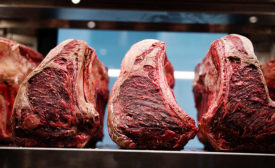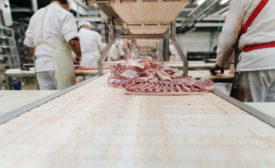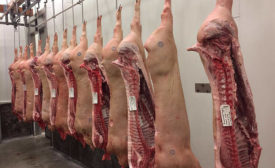Home » Keywords: » microbials
Items Tagged with 'microbials'
ARTICLES
Research collaboration aims to improve microbial detection tools.
Read More
Tech | Processing
Alternative proteins: ripe for the picking
Revenue opportunities abound for traditional meat and poultry processors in the plant-based sector, but operators must first master the category’s unique dynamics.
November 8, 2020
Tech | Meat Science Review
Surveying the dry-aged beef crust
Microbial communities on dry-aged beef in commercial meat processing facilities.
November 6, 2020
Food Safety | Rapid Testing
Rapid testing enhances capabilities but must be accurate
Swift testing for microbials can enhance food safety and cut product waste, but obtaining the results in a timely manner can be daunting.
Read More
Processing | Conveyors & Beltings
Keeping product rolling along safely
Sanitizing conveyors and belts efficiently is essential for food safety, reduced operating expenses.
Read More
Higher Education | Carcass Hanging Time
Microbials and the effect of extended hanging time on pork carcasses and blade steaks
Read MoreGet our new eMagazine delivered to your inbox every month.
Stay in the know with The National Provisioner's comprehensive coverage of the meat and poultry processing industry.
SUBSCRIBE TODAY!Copyright ©2024. All Rights Reserved BNP Media.
Design, CMS, Hosting & Web Development :: ePublishing









